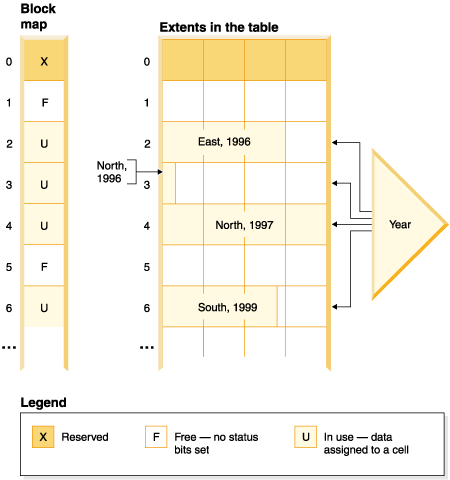When a block is emptied, it is disassociated from its current logical cell values by removing its BID from the block indexes. The block can then be reused by another logical cell. This reduces the need to extend the table with new blocks.
When a new block is needed, previously emptied blocks need to be found quickly without having to search the table for them.
The block map is a structure used to facilitate locating empty blocks in the MDC table. The block map is stored as a separate object:
The block map is an array containing an entry for each block of the table. Each entry comprises a set of status bits for a block.

In Figure 1, the left side shows the block map array with different entries for each block in the table. The right side shows how each extent of the table is being used: some are free, most are in use, and records are only found in blocks marked in use in the block map. For simplicity, only one of the two dimension block indexes is shown in the diagram.
Free blocks are found easily for use in a cell, by scanning the block map for FREE blocks, that is, those without any bits set.
Table scans also use the block map to access only extents currently containing data. Any extents not in use do not need to be included in the table scan at all. To illustrate, a table scan in this example (Figure 1) would start from the third extent (extent 2) in the table, skipping the first reserved extent and the following empty extent, scan blocks 2, 3 and 4 in the table, skip the next extent (not touching any of that extent's data pages), and then continue scanning from there.